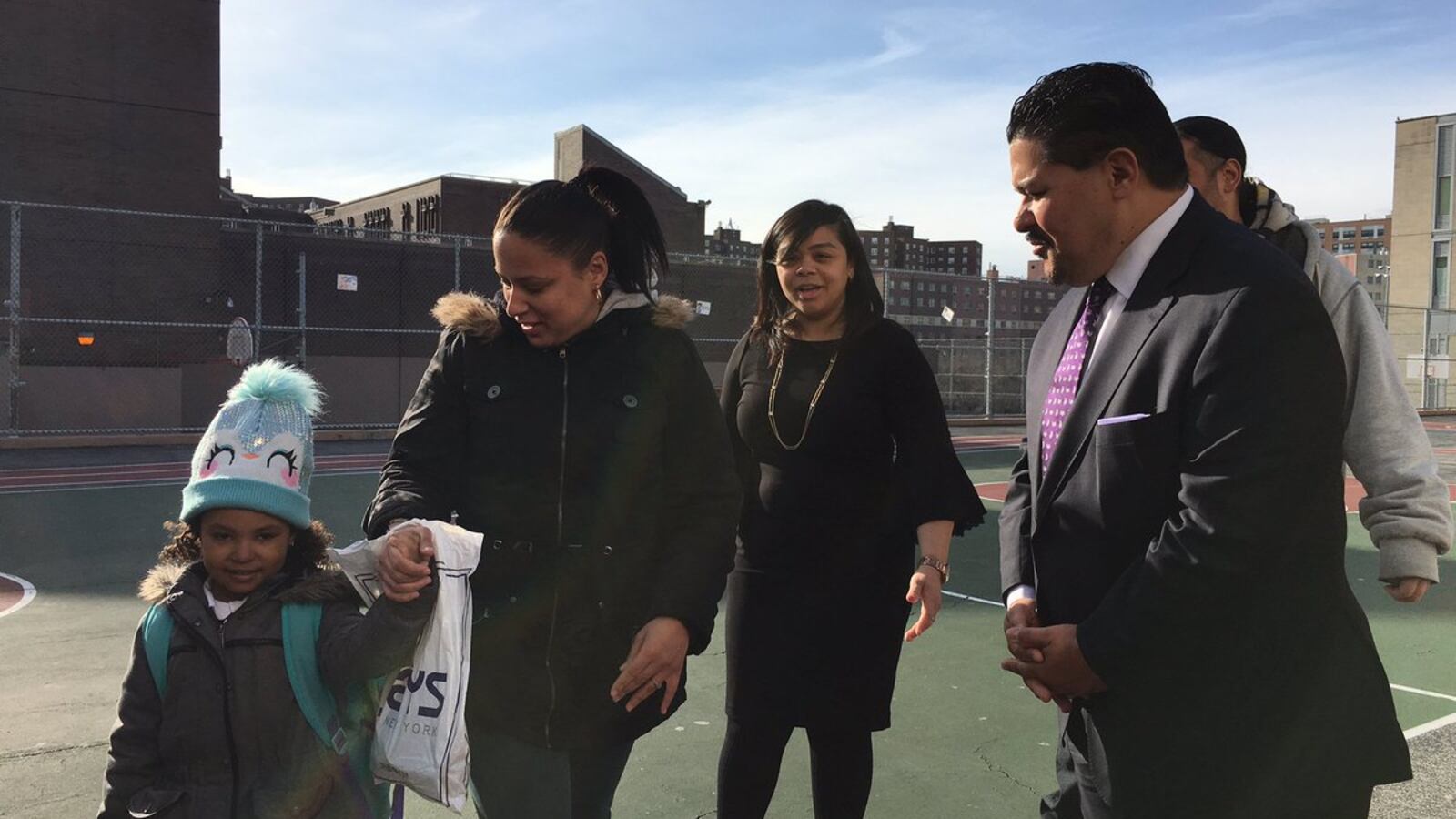If there were any doubt that new New York City schools chief Richard Carranza would take a stronger stand on segregation than his predecessor, he shut it down with a tweet overnight.
Just before 1 a.m. Friday morning, Carranza tweeted a viral version of the NY1 video that shows Upper West Side parents angrily pushing back against a city proposal that could result in their children going to middle school with lower-scoring classmates.
Carranza didn’t add any commentary of his own to the message generated automatically by the site that amplified the NY1 video, Raw Story. He didn’t have to for his Twitter followers to see an endorsement of the site’s characterization of the video — “Wealthy white Manhattan parents angrily rant against plan to bring more black kids to their schools.”
Parents and educators began responding as the city stirred awake this morning. Here’s one response from a high school principal:
And another from a middle school math teacher and founder of Educolor, an advocacy group for teachers of color:
Since taking the chancellorship, Carranza has signaled that he believes the education department has a central role to play in desegregating schools — offering a contrast to the chancellor he replaced, Carmen Fariña. She called school diversity a priority but argued that integration efforts should happen “organically” and be driven by school leaders and local communities, not department officials.
One early exchange on Twitter in response to Carranza suggested that any moves to desegregate schools could face resistance — and that he also would have support.
Carranza’s tweet came hours after Mayor Bill de Blasio announced that his city budget would include $23 million for “anti-bias training” for school staff, something that some parent activists and some elected officials have been demanding.
It also came hours before he’s scheduled to visit a Harlem middle school, Hamilton Grange, that wouldn’t be part of the academic integration proposal because it is part of District 6, not nearby District 3 where the idea is under consideration.
Such a proposal would likely look different there, because just 28 percent of fifth-graders in District 6 — which includes some parts of Harlem as well as Washington Heights and Inwood — met the state’s standards in math last year, compared to 57 percent in District 3. The gap was similar in reading.

